Close-Up Of The First Mechanical Gear Ever Found In Nature

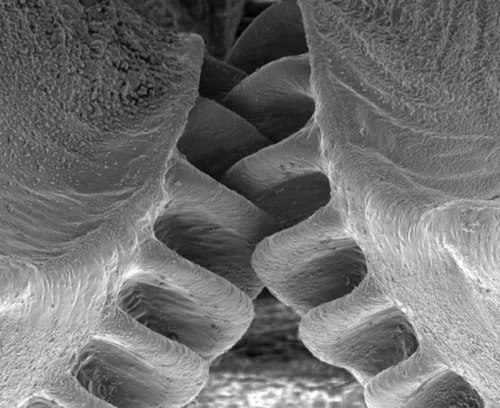
Close-Up of the First Mechanical Gear Ever Found in Nature
The biological form of a mechanical gear was observed in nature for the first time in juvenile planthoppers (Genus: Issus), a common insect that can be found in gardens across Europe.
The insect has hind-leg joints with curved cog-like strips of opposing ‘teeth’ that intermesh, rotating like mechanical gears to synchronize the animal’s legs when it launches into a jump. The finding demonstrates that gear mechanisms previously thought to be solely man-made have an evolutionary precedent.
(Continue Reading)
More Posts from Science-is-magical and Others

How the Geneva Drive (the mechanical step that makes the second hand on a clock work by turning constant rotation into intermittent motion) works.

A dash of graphene can transform the stretchy goo known as Silly Putty into a pressure sensor able to monitor a human pulse or even track the dainty steps of a small spider1.
The material, dubbed G-putty, could be developed into a device that continuously monitors blood pressure, its inventors hope. It also demonstrates a form of self-repair that may herald smarter graphene composites.
Since graphene was first isolated in 2004, researchers have added these atom-thin sheets of carbon to a panoply of different materials, hoping to create composites that benefit from its superlative strength and electrical conductivity. But there have been surprisingly few attempts to blend it with ‘viscoelastic’ materials such as Silly Putty, which behaves as both an elastic solid and a liquid. Leave a lump on top of a hole, for example, and it will slowly ooze through.
Conor Boland, a researcher working in Jonathan Coleman’s nanotechnology lab at Trinity College Dublin, wondered what would happen if he brought the two materials together. “I’d like to be able to say it was carefully planned, but it wasn’t,” laughs Coleman. “We’ve just got a tradition in my group of using household stuff in our science.” (In 2014, his team found that they could make graphene by blitzing graphite in a kitchen blender2).
Continue Reading.
If Earth had Saturn’s Rings
From an excellent post by Jason Davis
From Washington, D.C., the rings would only fill a portion of the sky, but appear striking nonetheless. Here, we see them at sunrise.

From Guatemala, only 14 degrees above the equator, the rings would begin to stretch across the horizon. Their reflected light would make the moon much brighter.

From Earth’s equator, Saturn’s rings would be viewed edge-on, appearing as a thin, bright line bisecting the sky.

At the March and September equinoxes, the Sun would be positioned directly over the rings, casting a dramatic shadow at the equator.

At midnight at the Tropic of Capricorn, which sits at 23 degrees south latitude, the Earth casts a shadow over the middle of the rings, while the outer portions remain lit.

via x
One of my favourite geology facts is this: These diagrams are a lie.

The mantle isn’t yellow. Nor is it orange, or red, or brown, or gray, or black.
The earth’s mantle is made up largely of peridotite.
The earth’s mantle is lime green.

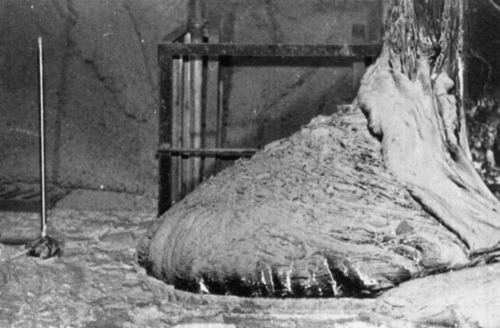
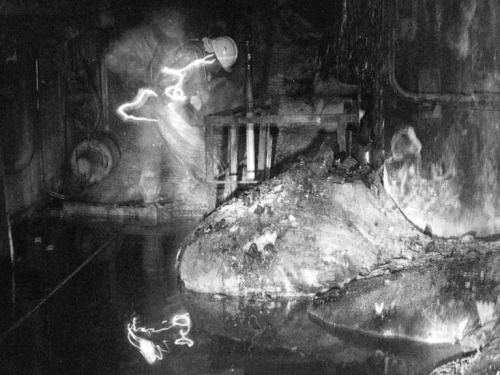
One of the most dangerous pictures ever taken - Elephant’s Foot, Chernobyl. This is a photo of a now dead man next the ‘Elephant’ Foot’ at the Chernobyl power plant.
The image distortions in the photo are created by intense level of radiation almost beyond comprehension. There is no way the person in this photo and the person photographing him could have survived for any more that a few years after being there, even if they quickly ran in, took the photos and ran out again. This photo would be impossible to take today as the rates of radioactive decay are even more extreme now due to a failed military experiment to bomb the reactor core with neuron absorbers. The foot is made up of a small percentage of uranium with the bulk mostly melted sand, concrete and other materials which the molten corium turns into a kind of lava flow. In recent years, it has destroyed a robot which tried to approach it, and the last photos were taken via a mirror mounted to a pole held at the other end of the corridor for a few seconds. It is almost certainly the most dangerous and unstable creation made by humans. These are the effects of exposure: 30 seconds of exposure - dizziness and fatigue a week later 2 minutes of exposure - cells begin to hemorrhage (ruptured blood vessels) 4 minutes - vomiting, diarrhea, and fever 300 seconds - two days to live
A reminder that NASA isn’t the only space agency
I have seen many “Space achievements 2015” articles and posts leaving international accomplisments completely out, so here are some of them:
1. A new type of basaltic rock on the moon was found by Chinese robotic lander.
China National Space Administration’s Chang’e-3 landed on the Moon on 14 December 2013, becoming the first spacecraft to soft-land since the Soviet Union‘s Luna 24 in 1976.

2. On February 11, the European Space Agency, ESA, successfully launched on a suborbital trajectory and recovered an experimental wingless glider, IXV.
It became the first true “lifting body” vehicle, which reached a near-orbital speed and then returned back to Earth without any help from wings.

3. On December 9, Japan’s Akatsuki spacecraft succeeded entering orbit of Venus.
Japan Aerospace eXploration Agency’s Akatsuki is the first spacecraft to explore Venus since the ESA’s Venus Express reached the end of its mission in 2014.

4. ESA’s Rosetta spacecraft detected oxygen ‘leaking’ from comet 67P/Churyumov-Gerasimenko, the first time these molecules have been seen around a comet.
Rosetta spacecraft, the first to drop a lander (named Philae) on a comet, entered orbit around 67P in 2014 and continues to orbit the body. On June 13, European Space Operations Centre in Darmstadt, Germany, received signals from the Philae lander after months of silence.

5. The Canadian Space Agency has provided NASA with a laser mapping system that will scan an asteroid that could potentially hit the Earth in about 200 years

6. The high-resolution stereo camera on ESA’s Mars Express captured this sweeping view from the planet’s south polar ice cap and across its cratered highlands and beyond.

find Sci-Universe on Tumblr, Instagram & Facebook
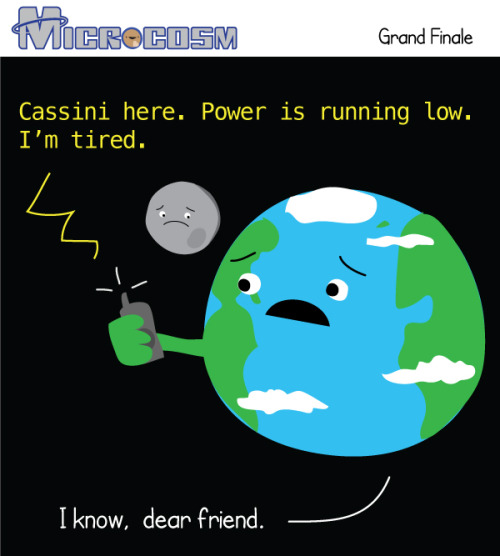
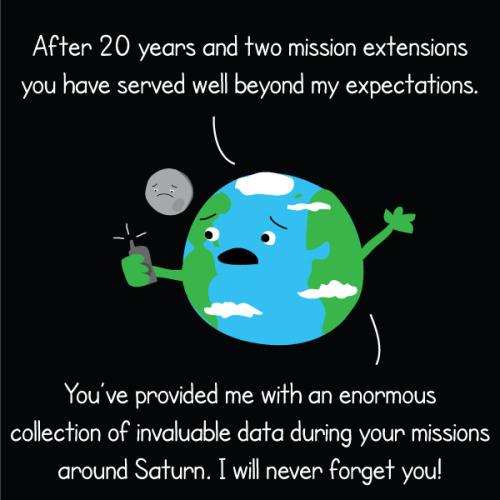

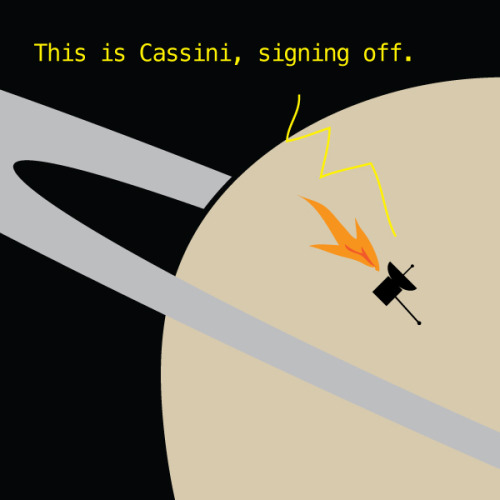

Friday, Cassini will dive into Saturn’s atmosphere and put an end to its nearly 20 year mission. Over those years we learned an incredible amount of information about Saturn, its rings, and its many moons. During the grand finale, Cassini will continue to send back information about Saturns atmosphere before burning up like a shooting star.
Info Post #1: What is DNA?
This is the first of thirteen more in-depth write-ups I have planned out for this year. The list (which is not set in stone!) can be found here.
I decided to do these as a way to get more information out to the readers here without having to delve into one specific ask or series of questions. I can imagine that these might create more questions as I go, but I’m also hoping that they will provide a resource that readers can refer back to. The general idea is to allow the series to build up in complexity, and give everyone a better understanding of these topics!
What is DNA?
This first topic is going to be relatively short, because in a couple of weeks I am going to do “what is a gene”, which will get much longer and more complicated, but I wanted some set up about the physical structure of DNA.
You might have heard DNA described in a lot of different ways. Deoxyribonucleic acid. The building blocks of life. The blueprint of You. None of these are particularity inaccurate, but I don’t think that any of them are super great descriptors of what exactly DNA is, or how exactly it goes from existing in cells to encoding entire organisms (although I am going to talk about the actual encoding part in the future).
For now, we are going to start small. Let’s only look at the actual physical structure. Here we have a DNA molecule:

image from wikimedia commons here
So beautiful! (I might be biased, but DNA is my favourite molecule- it’s elegant in both design and function.)
This can be broken down into two main parts:
The phosphate-sugar backbone (all those P’s and O’s and light blue on the outside)
The nucleobases (adenine [A], thymine [T], cytosine [C], and guanine [G]- the purple, pink, yellow and green)
I will point out the hydrogen bonds in the middle as well. Note that cytosine and guanine have three bonds between them, and adenine and thymine only have two. These molecules always bond in this pattern (A bonds to T, and C to G). If you’ve heard DNA being described as “complementary”, this is why! If you find a C on one strand, you know that you will find a G on the other (this became very important for sequencing, but we will talk about that later).
The hydrogen bonds in the middle are quite important as well. If these molecules were bonded to each other directly, it would be basically impossible to open the strand to “read” the DNA. Instead, this can be done by breaking those hydrogen bonds, and then allowing them to reform. This does mean that a mutation is much more likely in a high A-T region rather than a high C-G on, simply because A-T only has two bonds, and C-G has three. As well, quite often before a gene is encoded, there’s a long stretch of TATA- repeated (these are cleverly called TATA-boxes), so that the strand can more easily be opened and the encoded gene read. More on that when I talk about what a gene is!
And that is honestly pretty much it for DNA (I say that in jest- there is a lot more, and this is the result of a few billion years of evolution!). It’s not a terribly complicated design, which is probably why it is so immensely biologically successful.
So, there we have it: a very, very quick rundown that is mostly to get some important features pointed out before I talk about what a gene is, and how DNA encodes them on January 31st. This is hardly comprehensive, but I will get more in-depth into the structure and features then, and I didn’t want to make that info post horrendously long. Thanks for reading!
-
 dotglobal liked this · 7 months ago
dotglobal liked this · 7 months ago -
 butcharyastark reblogged this · 9 months ago
butcharyastark reblogged this · 9 months ago -
 butcharyastark liked this · 9 months ago
butcharyastark liked this · 9 months ago -
 bblablablahh reblogged this · 3 years ago
bblablablahh reblogged this · 3 years ago -
 coffee-math-chamomile liked this · 3 years ago
coffee-math-chamomile liked this · 3 years ago -
 worsip reblogged this · 4 years ago
worsip reblogged this · 4 years ago -
 julie-etudie liked this · 4 years ago
julie-etudie liked this · 4 years ago -
 prairie-time reblogged this · 4 years ago
prairie-time reblogged this · 4 years ago -
 a-valid-username liked this · 4 years ago
a-valid-username liked this · 4 years ago -
 runeb0y liked this · 4 years ago
runeb0y liked this · 4 years ago -
 fai-faery liked this · 4 years ago
fai-faery liked this · 4 years ago -
 rationalyannoying reblogged this · 4 years ago
rationalyannoying reblogged this · 4 years ago -
 awkwardlylovly liked this · 4 years ago
awkwardlylovly liked this · 4 years ago -
 b-a--t reblogged this · 4 years ago
b-a--t reblogged this · 4 years ago -
 thingsfordragonag reblogged this · 4 years ago
thingsfordragonag reblogged this · 4 years ago -
 afishdrowning liked this · 4 years ago
afishdrowning liked this · 4 years ago -
 minecrafttortie liked this · 4 years ago
minecrafttortie liked this · 4 years ago -
 chillgamesh-the-swing reblogged this · 4 years ago
chillgamesh-the-swing reblogged this · 4 years ago -
 mushroomchatroom reblogged this · 4 years ago
mushroomchatroom reblogged this · 4 years ago -
 lalitrus reblogged this · 4 years ago
lalitrus reblogged this · 4 years ago -
 thebiostudies reblogged this · 4 years ago
thebiostudies reblogged this · 4 years ago -
 stargirl-and-potts reblogged this · 4 years ago
stargirl-and-potts reblogged this · 4 years ago -
 ebbashuvud reblogged this · 4 years ago
ebbashuvud reblogged this · 4 years ago -
 heliophile-oxon reblogged this · 4 years ago
heliophile-oxon reblogged this · 4 years ago -
 heliophile-oxon liked this · 4 years ago
heliophile-oxon liked this · 4 years ago -
 jawsbones liked this · 4 years ago
jawsbones liked this · 4 years ago -
 sinnsenke liked this · 4 years ago
sinnsenke liked this · 4 years ago -
 saratimes reblogged this · 4 years ago
saratimes reblogged this · 4 years ago -
 saratimes liked this · 4 years ago
saratimes liked this · 4 years ago -
 biitumen liked this · 4 years ago
biitumen liked this · 4 years ago -
 flightoftheconchords liked this · 4 years ago
flightoftheconchords liked this · 4 years ago -
 lemonmintcoughdrops liked this · 4 years ago
lemonmintcoughdrops liked this · 4 years ago -
 theinvisblegirl1291 reblogged this · 4 years ago
theinvisblegirl1291 reblogged this · 4 years ago -
 lixiepixie liked this · 4 years ago
lixiepixie liked this · 4 years ago -
 starling126 liked this · 4 years ago
starling126 liked this · 4 years ago -
 deerbrush liked this · 4 years ago
deerbrush liked this · 4 years ago -
 bringthegun reblogged this · 4 years ago
bringthegun reblogged this · 4 years ago -
 mofangjiaoshi liked this · 4 years ago
mofangjiaoshi liked this · 4 years ago -
 skybells507 reblogged this · 4 years ago
skybells507 reblogged this · 4 years ago -
 skybells507 liked this · 4 years ago
skybells507 liked this · 4 years ago

